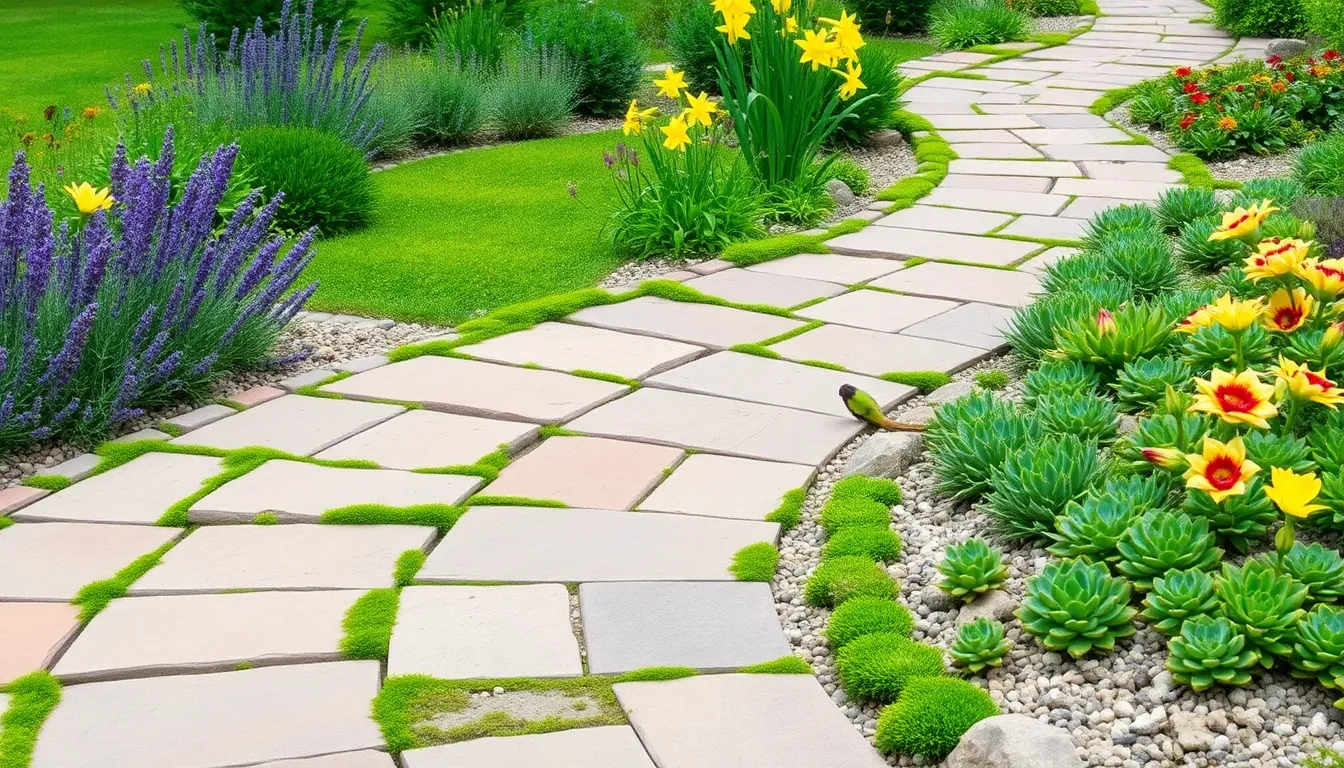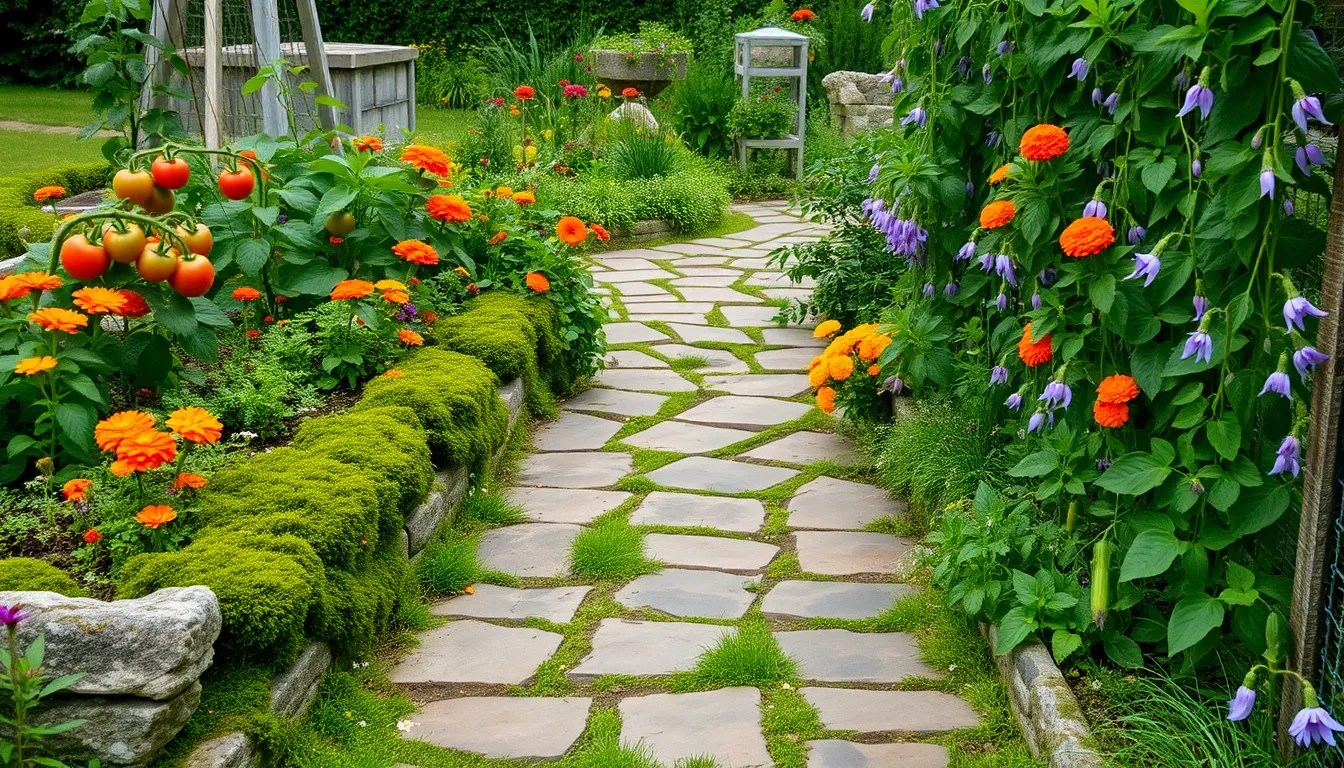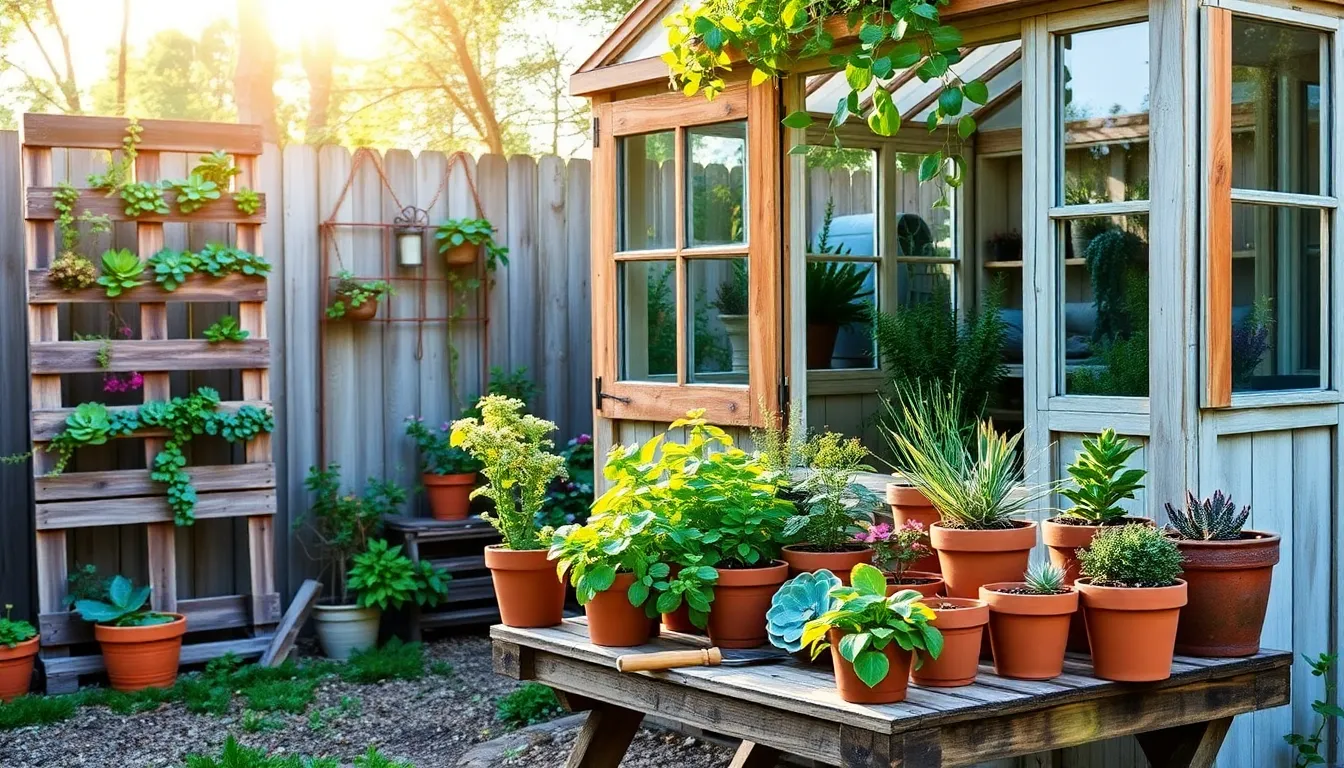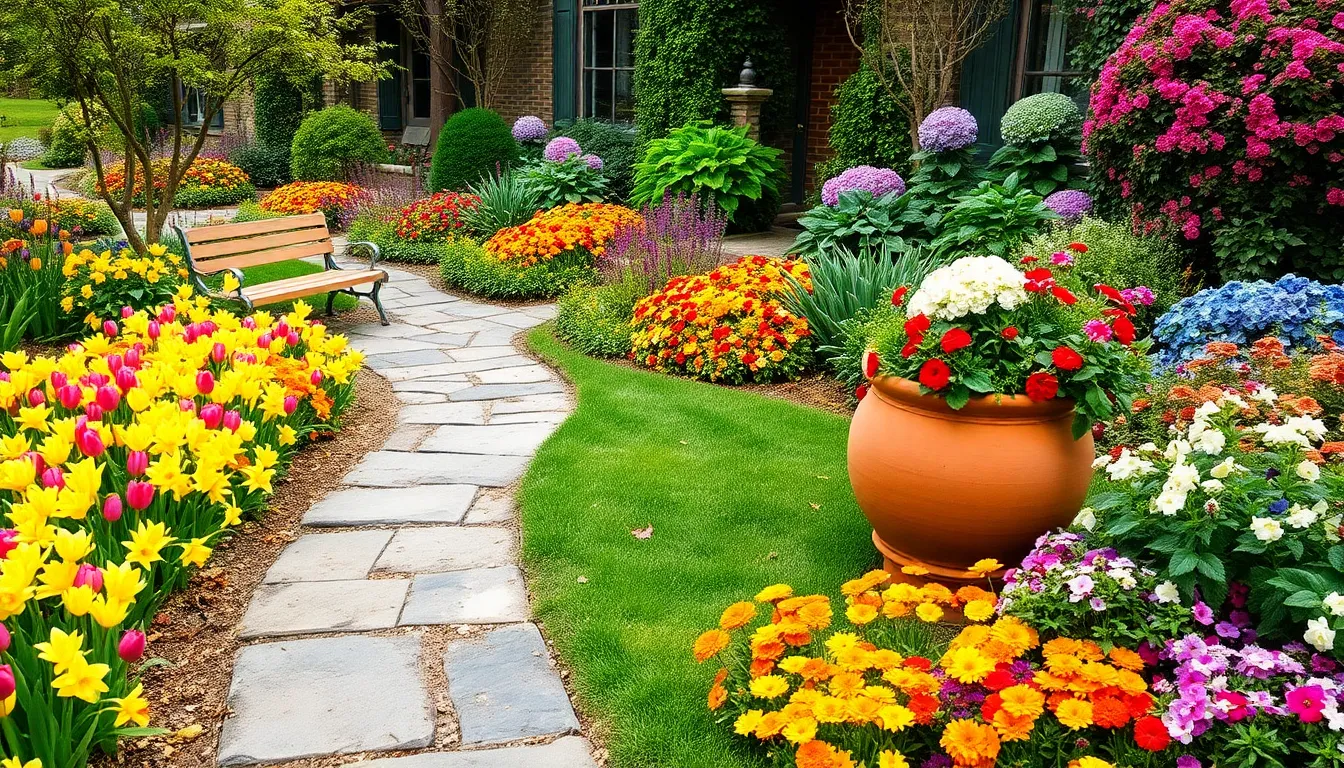Gardening is an art, and like any masterpiece, it begins with a carefully crafted foundation. A well-designed garden pathway does more than lead you through your outdoor space—it invites exploration and elevates the entire garden experience. Whether you’re just getting your hands dirty for the first time or have been nurturing plants for years, choosing a low-maintenance pathway design can transform your garden into a serene oasis without adding to your to-do list.
In this article, we’ll explore 11 inspiring garden pathway designs that blend beauty with simplicity, perfect for any skill level. From lush, plant-lined walkways to minimalist gravel trails, each design is tailored to offer elegance and functionality with minimal upkeep. You’ll discover how these paths not only enhance your garden’s aesthetic but also make navigation easier, ensuring you spend more time enjoying the fruits of your labor and less time on maintenance.
By the end of this journey, you’ll be equipped with actionable insights and creative ideas to enhance your garden’s charm effortlessly. We’ll delve into practical tips and design strategies that suit both small urban gardens and sprawling country landscapes. So, grab your gardening gloves and let’s embark on creating pathways that are as inviting as they are easy to maintain, turning every step into a delightful part of your gardening adventure.
Choosing Durable Pathway Materials
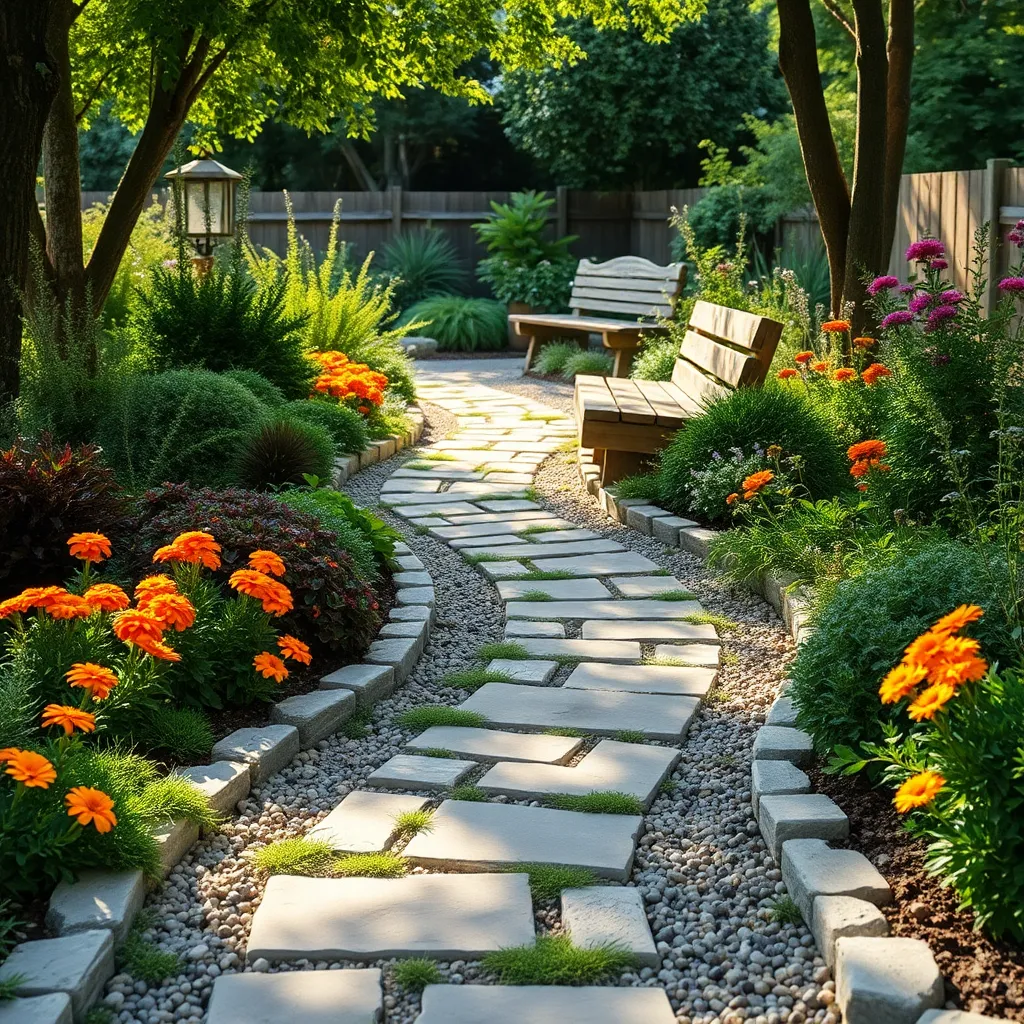
Choosing the right materials for your garden pathway is essential for creating a durable and low-maintenance design. Gravel is a popular choice due to its affordability and natural look, making it suitable for both formal and informal garden styles.
Consider using stone pavers if you want a more structured and elegant appearance. Stone pavers are highly durable and can withstand heavy foot traffic, making them ideal for high-use areas in your garden.
For a softer underfoot feel, consider using bark mulch or wood chips, which are both eco-friendly options. These materials not only provide a cushioned pathway but also help retain moisture in the soil, benefiting nearby plants.
Advanced gardeners might explore the use of recycled materials, such as crushed glass or rubber mulch, for a unique and sustainable pathway. These innovative materials offer excellent drainage and can add a splash of color to your garden.
Gravel Paths: Simple and Stylish
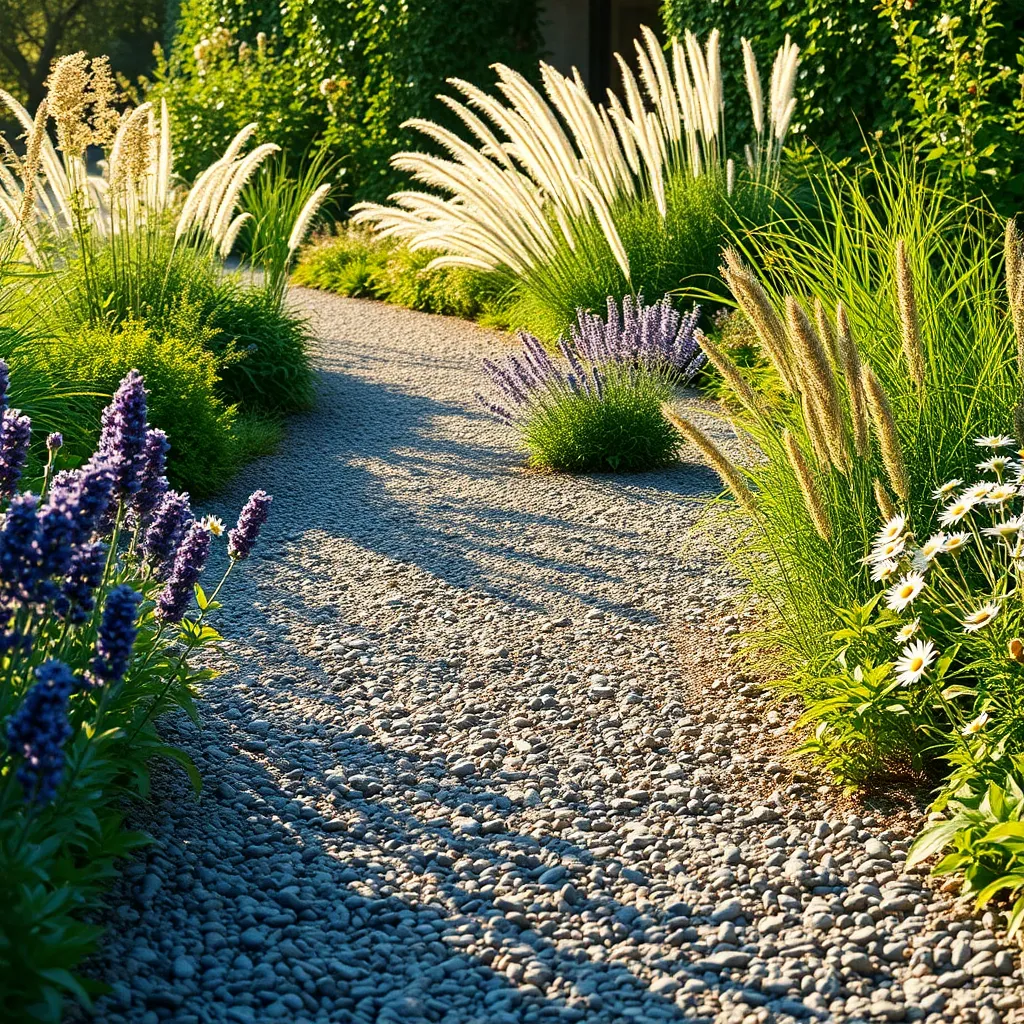
Gravel paths offer both simplicity and style, making them a popular choice for low-maintenance garden pathways. They are easy to install, requiring minimal tools, and can be a weekend project for any dedicated gardener.
Begin by planning your path’s layout to ensure it fits well with your garden design. Use stakes and string to outline the desired path, adjusting as needed for smooth curves or straight lines.
Once you have your layout, excavate the area to a depth of about 4 inches. This depth provides enough space for a solid gravel base and ensures your path remains stable and weed-free.
Choose the right type of gravel for your path, such as pea gravel for a softer feel or crushed stone for a firmer surface. Spread a layer of landscape fabric before adding gravel to prevent weeds from sneaking through.
For a more finished look, consider edging your path with bricks, stone, or metal edging. This not only holds the gravel in place but also adds a clean line and definition to your path.
Maintenance is simple; just rake the gravel occasionally to keep it even and replenish it once a year if necessary. With these tips, your gravel path will be an effortless, stylish addition to your garden.
Stepping Stones for Easy Elegance
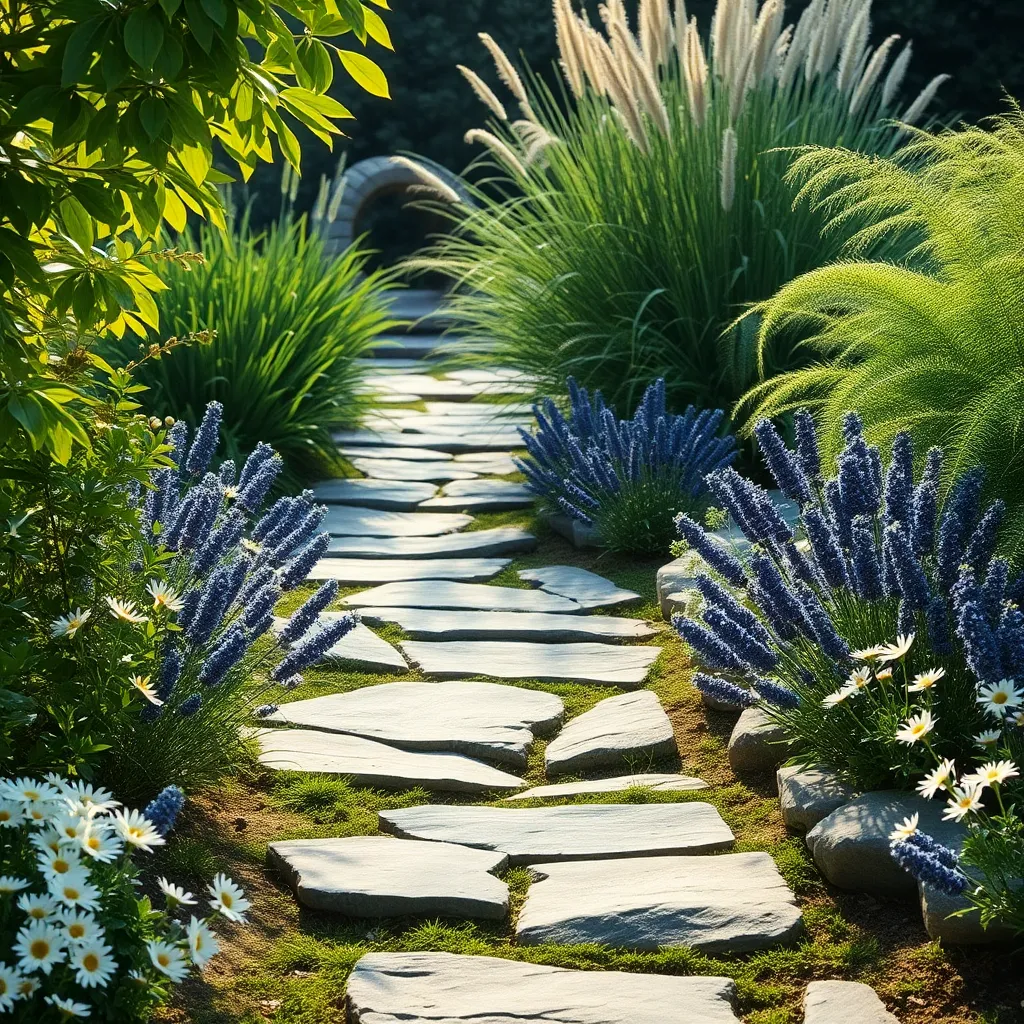
Stepping stones can transform your garden into a serene haven while requiring minimal upkeep. They offer a practical solution by creating a clear path that prevents soil compaction and keeps plants safe from foot traffic.
Choose stones that complement your garden’s aesthetic, such as flagstone or slate, for a natural look. It’s essential to space the stones comfortably, about 18 inches apart, to ensure easy navigation.
Before laying the stones, remove any weeds and level the ground to keep them stable over time. Compact the soil beneath each stone and add a layer of sand to help with drainage and stability.
Consider planting low-growing groundcovers like thyme or clover between the stones to add greenery and prevent weeds. These plants thrive with minimal care, needing only occasional watering during dry spells.
For an advanced touch, integrate solar-powered lights along the path to enhance safety and ambiance. This step not only beautifies the path at night but also allows you to enjoy your garden’s elegance long after sunset.
Paver Pathways: Versatile and Sturdy
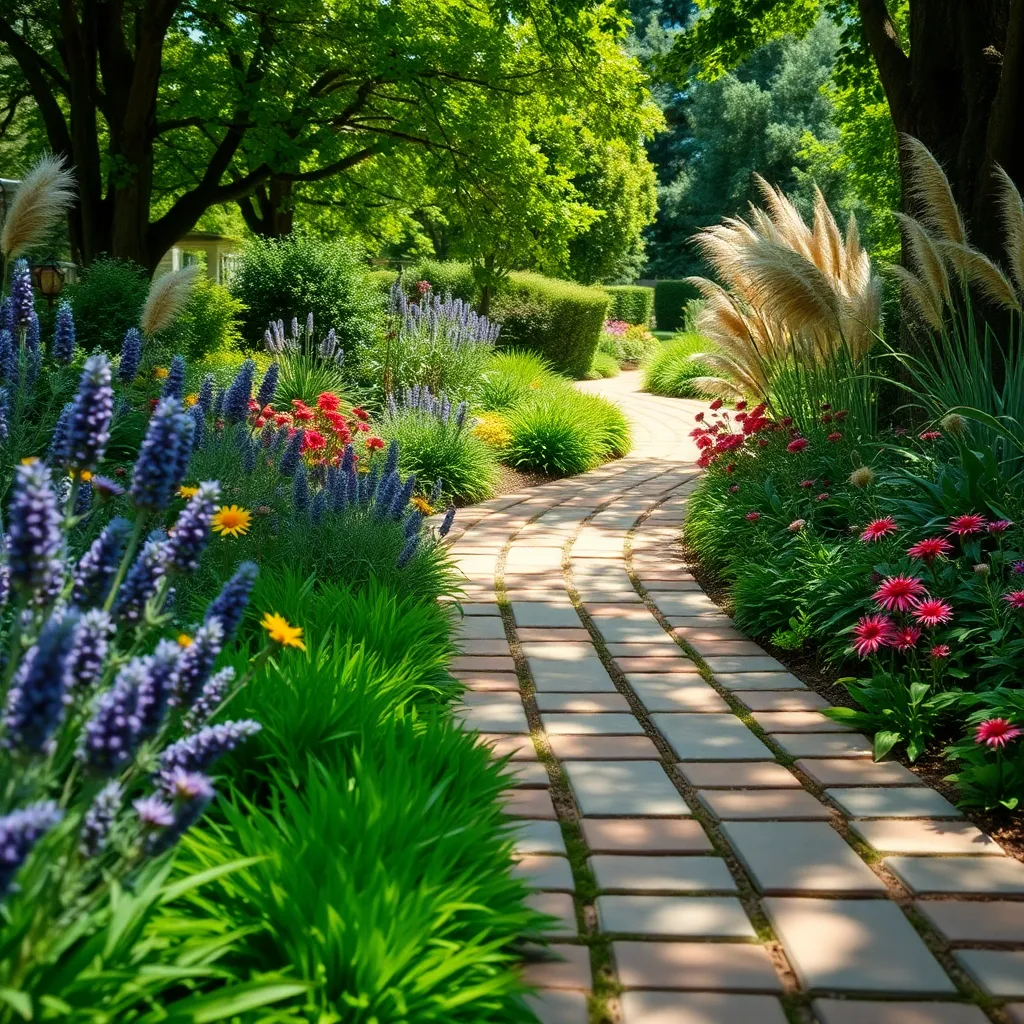
Paver pathways offer a versatile and durable solution for garden paths that can complement any landscape design. They are available in a wide range of materials, including concrete, brick, and natural stone, allowing you to match the pathway to the aesthetic of your garden.
For a successful installation, begin by choosing the right foundation. A well-prepared base of compacted gravel topped with a layer of sand will ensure that your pavers remain level and stable over time.
Consider the climate and soil conditions in your area when selecting your paver material. In regions with heavy rainfall, opt for permeable pavers that allow water to drain, preventing puddles and erosion.
Maintenance is minimal, requiring only occasional sweeping and the removal of weeds that may sprout between the pavers. Applying a layer of polymeric sand between the pavers can help to inhibit weed growth and maintain the pathway’s appearance.
Wood Mulch for Natural Appeal
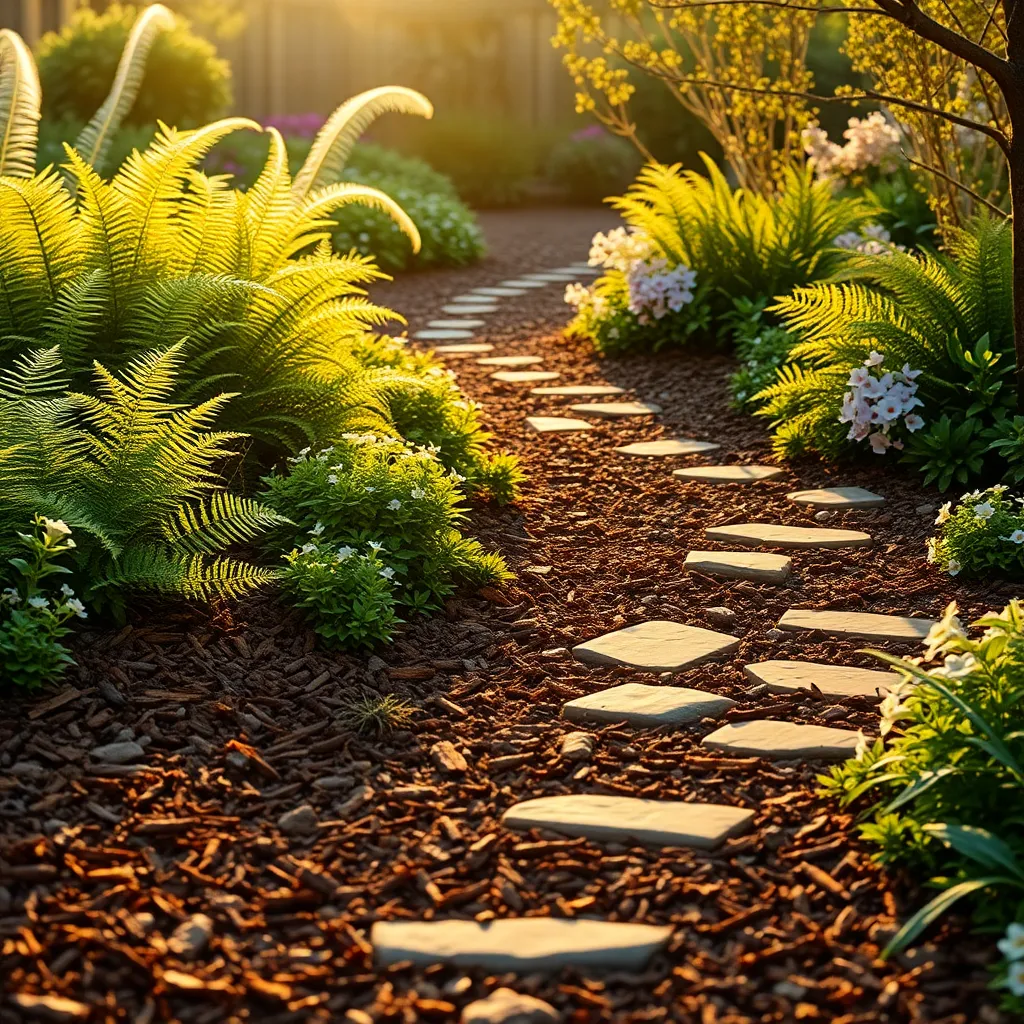
Wood mulch pathways offer a natural and rustic appeal that’s perfect for any garden setting. They are an excellent choice for gardeners looking to reduce maintenance while maintaining an aesthetically pleasing landscape.
To create a wood mulch pathway, start by laying down a layer of landscape fabric to prevent weed growth. Cover the fabric with a thick layer of mulch, about 2 to 3 inches deep, to ensure it stays in place and effectively suppresses weeds.
Regular maintenance is minimal, but it’s essential to replenish the mulch annually. This simple step not only maintains the pathway’s appearance but also contributes nutrients back into the soil as the mulch decomposes.
For the best results, choose hardwood mulch like cedar or oak, as these types are more durable and long-lasting. Avoid using dyed or treated mulches, as they can leach chemicals into your garden and potentially harm plants.
Brick Walkways: Classic and Timeless
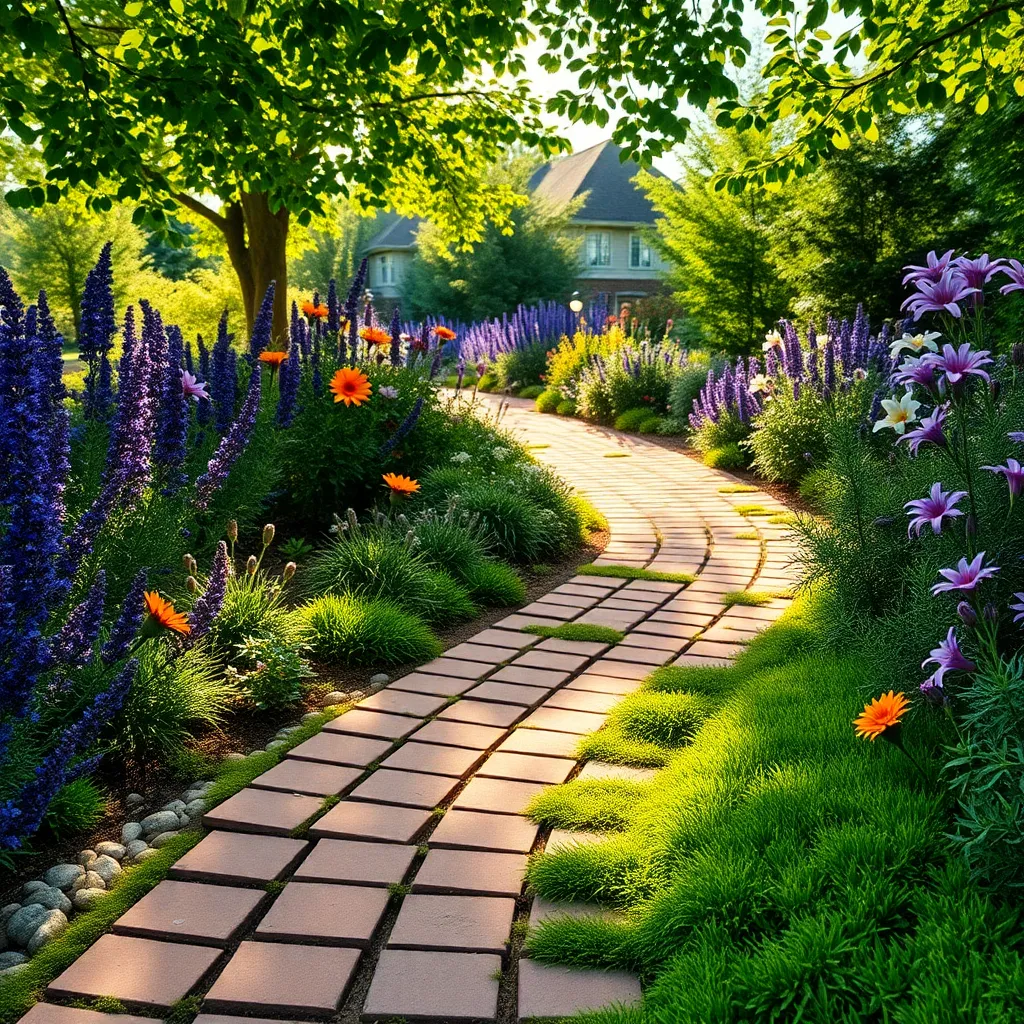
Brick walkways are a classic choice that offers both durability and aesthetic appeal. They provide a timeless look that can complement any garden style while requiring minimal upkeep.
For installation, ensure the ground is level and compact before laying the bricks. A layer of sand or gravel beneath the bricks will improve drainage and stability, helping to prevent weeds from growing through.
In terms of maintenance, a quick sweep and occasional rinse with water are usually sufficient. If moss or algae start to form, a mixture of water and vinegar can be used to gently scrub the surface clean.
Choosing the right type of brick can enhance the longevity and appearance of your walkway. Opt for clay bricks for their natural color and weather resistance, or concrete bricks for uniformity and cost-effectiveness.
Concrete Slabs for Modern Gardens
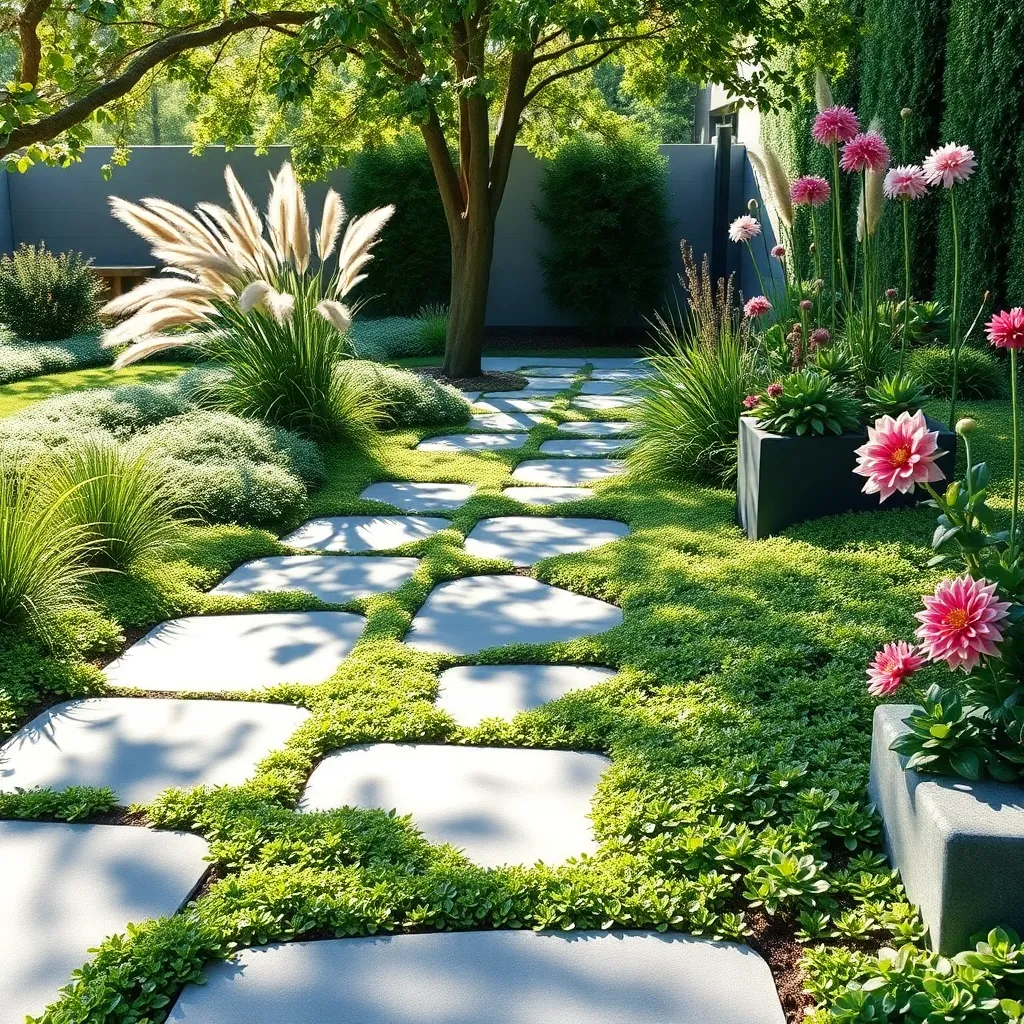
Concrete slabs are an excellent choice for modern gardens due to their durability and sleek appearance. They require minimal maintenance, making them perfect for gardeners who prefer spending more time enjoying their outdoor space rather than tending to it.
When installing concrete slabs, consider their placement to create a sense of flow and movement in your garden. Mixing different sizes and shapes can add visual interest and ensure your pathway complements the overall design of your garden.
For beginners, ensure the ground is level before placing the slabs to prevent tripping hazards and uneven wear. Advanced gardeners might explore using decorative aggregates or dyes in the concrete mix to enhance aesthetic appeal, adding a personalized touch.
To maintain your concrete slabs, simply clean them with a hose or pressure washer as needed to keep them looking fresh. Seal the slabs every few years to protect them from stains and the harsh effects of weather, ensuring their longevity in your garden.
Flagstone Paths: Rustic Charm
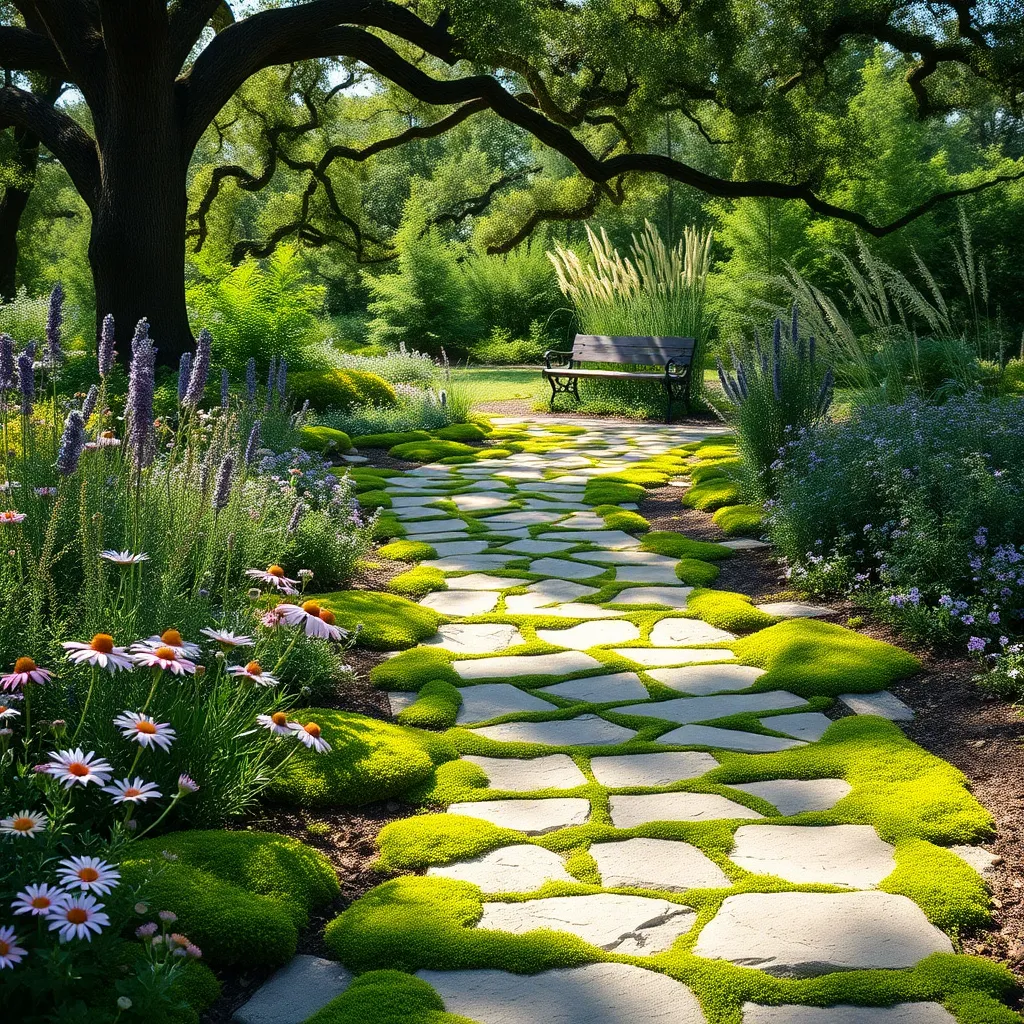
Flagstone paths provide a rustic charm that can transform any garden into a serene retreat. These paths are not only visually appealing but also highly durable and naturally low-maintenance. They fit seamlessly into gardens with a natural or cottage-style aesthetic, offering a beautiful contrast to vibrant greenery.
To create a flagstone path, begin by selecting stones that vary in shape and size for a more organic look. Arrange them in a pattern that feels natural, ensuring each stone is stable and level with the ground to prevent tripping hazards. For a more polished appearance, consider adding a border using smaller stones or gravel to frame the path.
Maintaining a flagstone path is simple, making it an ideal choice for busy gardeners. Regularly check for weeds growing between the stones and remove them by hand or with an organic weed killer. For added stability, you can fill gaps between the stones with sand or a low-growing ground cover plant like creeping thyme, which adds fragrance and color.
For a more advanced touch, consider adding lighting along your flagstone path to highlight its beauty during the evening. Solar-powered lights are an eco-friendly option that can easily be installed along the edges of the path. This not only enhances the aesthetic appeal but also improves safety by illuminating the path at night.
Eco-Friendly Recycled Path Options
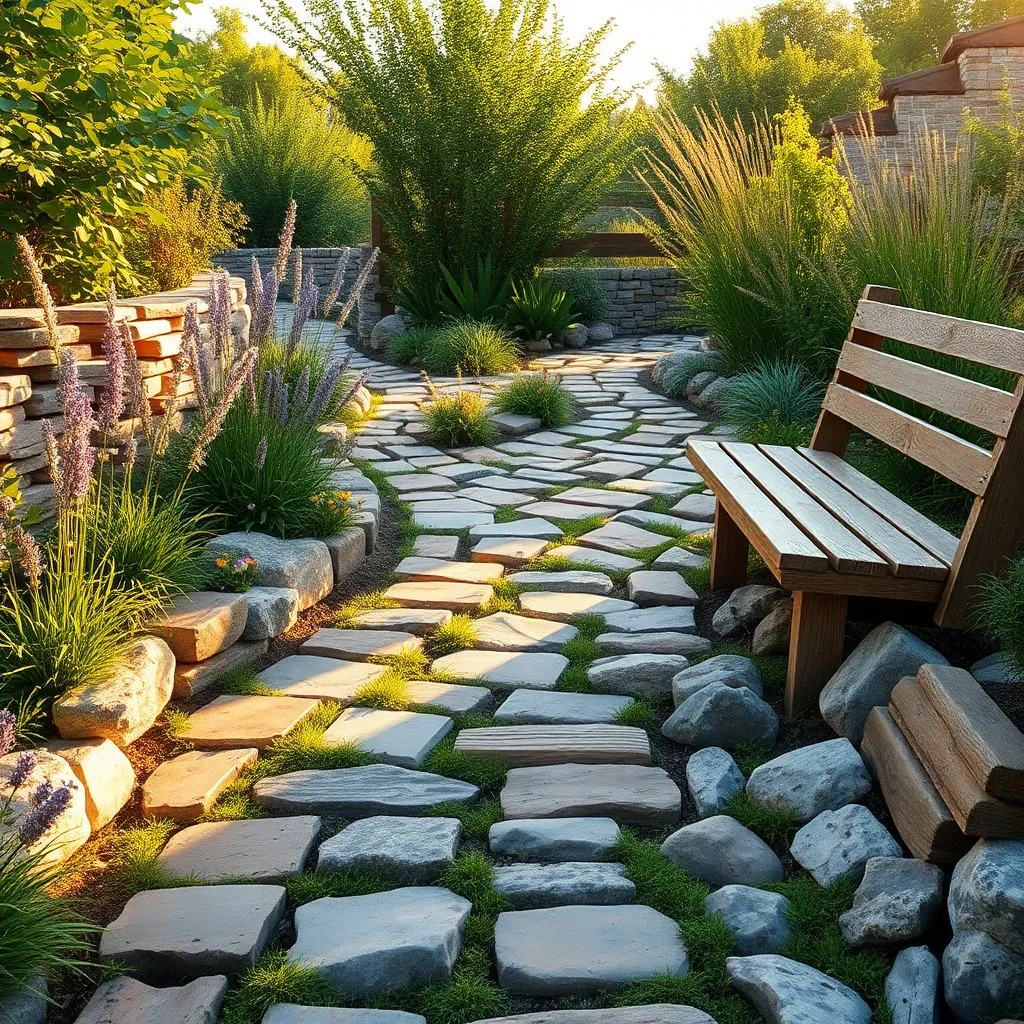
Eco-friendly recycled path options are an excellent way to integrate sustainability into your garden design. By using materials such as crushed shells, recycled glass, or repurposed bricks, you can create a distinctive path that reduces waste and enhances the aesthetic of your space.
Consider using crushed shells, which provide a natural, coastal look and are an excellent alternative to traditional gravel. These shells can compact over time, creating a stable surface that requires minimal maintenance, making them perfect for paths that experience light foot traffic.
Recycled glass mulch is another option that offers a vibrant and colorful pathway. This material is made from tumbled glass, which is smooth and safe to walk on, and its reflective quality can add a touch of brightness to shaded areas in your garden.
For a more traditional look, repurposed bricks can be laid in various patterns to suit your garden’s style. Ensure the ground is level and compacted before laying the bricks, and fill the gaps with a mix of sand and soil to promote drainage and prevent weed growth.
Low-Growth Groundcovers for Path Edges
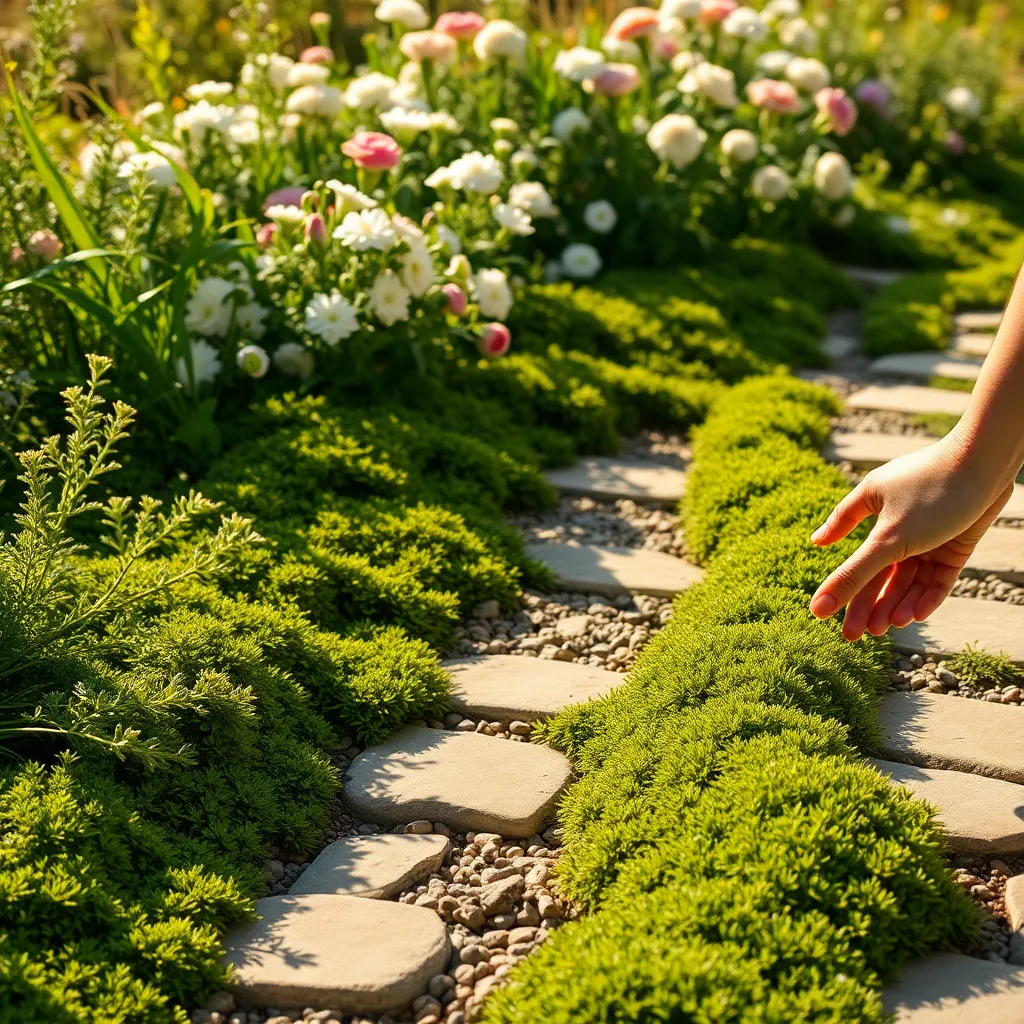
Enhancing the edges of your garden path with low-growth groundcovers adds beauty and functionality to your landscape. These plants help define boundaries and prevent soil erosion, creating a polished look with minimal effort.
One excellent choice for path edges is creeping thyme, which thrives in well-drained soil and full sun conditions. Beginners will appreciate its low maintenance needs, requiring only occasional watering during dry spells to remain lush and vibrant.
For gardeners seeking a more textured option, Irish moss offers a soft, moss-like appearance that thrives in partial shade and moist soil. Regularly check the soil moisture, ensuring it remains consistently damp but not waterlogged, to maintain its lush, green hue.
Advanced gardeners might consider the versatile Ajuga reptans, also known as bugleweed, which tolerates a variety of light conditions from full sun to partial shade. This plant’s rapid spread makes it ideal for quickly covering bare ground, but it may require occasional thinning to prevent it from overtaking other plants.
When planting these groundcovers, ensure the soil is enriched with organic matter to provide a nutrient-rich foundation. Regularly mulch around the plants to retain moisture and suppress weeds, making pathway maintenance a breeze.
Maintaining Your Low-Care Pathway
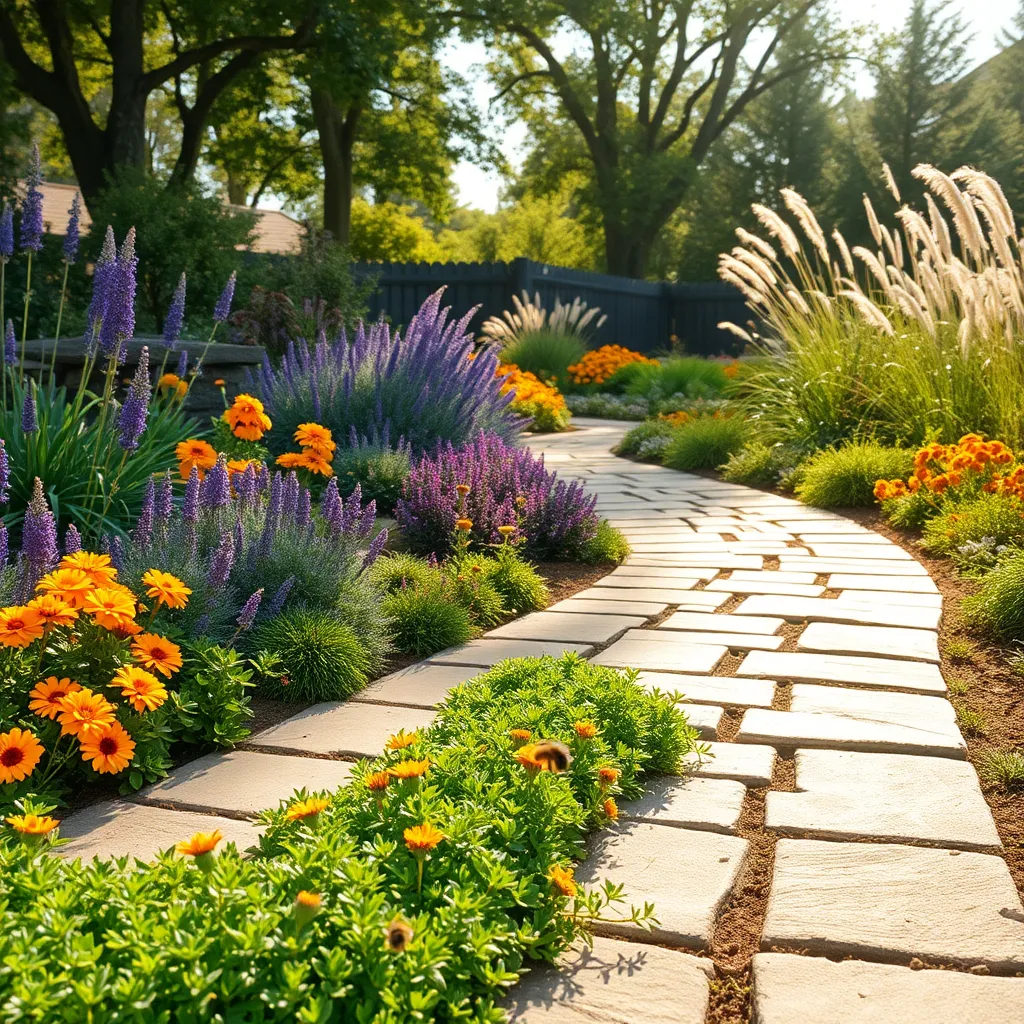
Maintaining your low-care pathway is essential to ensure it remains beautiful and functional over time. Begin by regularly clearing debris such as leaves and twigs to prevent them from breaking down and affecting the path’s surface.
Weed control is crucial for keeping your pathway looking tidy and inviting. Use a natural herbicide or manually pull weeds, focusing on young growth before it becomes established.
For pathways made of gravel or stone, periodically rake the surface to redistribute material evenly. This prevents uneven wear and helps maintain a consistent level, making the path safe and aesthetically pleasing.
Consider adding a layer of mulch along the edges to suppress weeds and retain moisture in adjacent planting areas. Mulch not only enhances the path’s appearance but also provides a tidy transition between the path and garden beds.
Regular maintenance of any edging materials such as bricks or timber is also key. Ensure they remain secure and aligned, as this prevents shifting and maintains the path’s defined shape.
Finally, assess your pathway periodically for any repairs needed, such as filling gaps or replacing damaged stones. Addressing these issues promptly ensures your pathway remains low-maintenance in the long run.
Conclusion: Growing Success with These Plants
In exploring ’11 Low-Maintenance Garden Pathway Designs’, we delved into creative approaches to nurturing relationships with the same care and attention as tending a garden. We covered key concepts such as clear communication, mutual respect, shared goals, adaptability, personal space, active listening, emotional support, trust-building, quality time, conflict resolution, and appreciation. These principles serve as pathways to a harmonious partnership, requiring minimal upkeep yet yielding flourishing results.
To immediately put these insights into practice, consider selecting one concept to focus on this week—perhaps enhancing your communication or carving out quality time together. Small steps can lead to significant transformations in your relationship landscape.
Remember, nurturing a relationship is an ongoing journey. Bookmark this article as a valuable resource to revisit whenever you need a reminder of these foundational principles. By saving it, you ensure that guidance is just a click away, empowering you to cultivate a thriving partnership.
Looking ahead, embracing these low-maintenance yet impactful strategies paves the way for lasting relationship success, where both partners grow together, hand in hand. Let this be your invitation to invest in love that blossoms beautifully over time.

